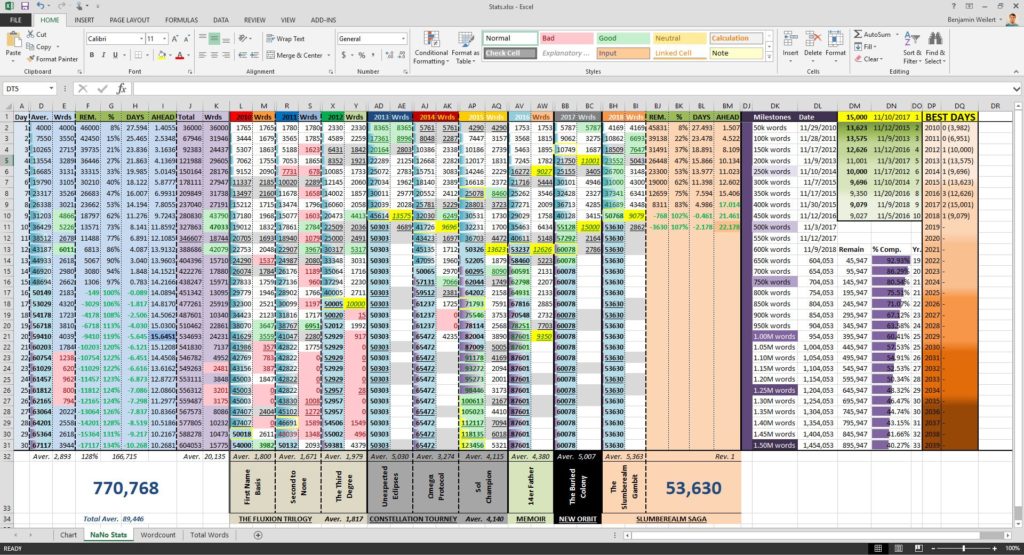This post was originally written for the NaNoWriMo blog. You can check it out here (it’s been slightly modified, but the content’s basically the same).
I’m an engineer. While most of my colleagues use this as an excuse to keep themselves from writing anything, I argue it’s the reason they need to be the best writers. The concepts engineers can create in their minds still need to be communicated to the world. Concepts never imagined before. Similarly, how many writers are out there with an idea nobody has ever read, just waiting to get it onto the page? As an engineer, I have a particular set of skills—some would say “quirks”—that have helped me over the last eight years of NaNoWriMo grow from just barely finishing to writing rapidly and voluminously.
Most engineers are known for their problem-solving skills, and NaNoWriMo presents an interesting problem: how do I write 50,000 words of a novel in 30 days? Like most problems, I resort to spreadsheets— as many engineers do. After all, I’m already writing the book in Microsoft Word, so it’s not hard to set up an Excel spreadsheet to track my progress. This spreadsheet is what helped me grow as a writer. Engineers also like numbered lists, so here’s how tracking my writing helped motivate me to become a better (or at least faster/more efficient) writer:
- 1,667 words are the MINIMUM – My spreadsheet doesn’t allow me to slack. If the “words written” column for that day is less than 1,667 words, I have to keep writing. I may be 15 days ahead, but until I get those 1,667, I can’t stop writing for that day.
- Compete against my past self – What’s nice about a spreadsheet that tracks your NaNoWriMo progress for one year is that it can be used to track your progress for the following years as well. Consequently, I’m always looking at ways to outdo myself each year, whether it’s being further ahead than in previous years, writing more per-day, or writing more than ever before. It’s how I was able to . . .
- Finish the 50,000 words of NaNoWriMo in 12 days or less (2013, 2015, 2016, and 2017)
- Write over 10,000 words in a single day (2012, 2013, 2015, 2016, and 2017 (x2))
- Write 123,456 words in a month (2015)
- Recognize trends – As I began to track my NaNoWriMo projects against each other, I started to see trends. I saw that I would usually write a lot during the Veteran’s Day weekend (since I get Veteran’s Day off). I also saw that I would get almost no writing done around Thanksgiving (since I travel out of town for it). Recognizing which days and situations were conducive to my writing helped me to schedule them out in advance so I’d be sure to use them to their utmost capability.

In the end, my spreadsheet allowed me to recognize the small—sometimes hidden—milestones that can give me a push to keep writing. Whether it’s realizing how close I am to 500,000 cumulative words (obtained on November 3rd, 2017), or seeing that I can beat a previous “high score” day from a past NaNoWriMo, these milestones are what made me realize that the impossible feats of veteran writers are actually quite achievable if you break them down into smaller chunks. And what engineer wouldn’t tackle a problem by first breaking it down into manageable pieces? But don’t take this engineer’s word for it, try it for yourself!
